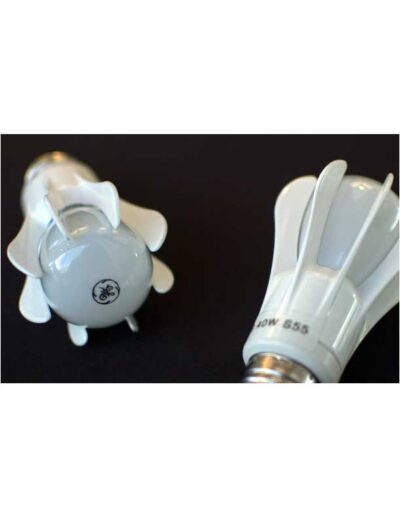
The battle with light bulbs will always be as long as there is competition on the market, and this can only be positive.
Lighting designers and technology developers said people should look forward to greater diversity in lighting products, rather than a dominant light source that meets all needs. That means people need to better understand the strengths and weaknesses of different technologies, both new and old, and use them for specific applications, they said.
“There’s no source that’s going to beat everything. LEDs are great for certain things, but HID [high-intensity discharge] metal halides have some really great advantages,” said Michael Myer, researcher in the energy and efficiency division of the Pacific Northwest National Laboratory, during a panel. “I really don’t think in my lifetime we’ll see a stadium lit with LEDs.”
One of the drivers for change in lighting technology is government-led efforts around the world to improve efficiency, the equivalent of fuel efficiency standards for vehicles. In 2012, for instance, a law will go into effect in the U.S. in keeping with efficiency mandates pointing toward the phase-out of 100-watt incandescent bulbs.
But even prior to legislation in the U.S. and elsewhere, demand for incandescent lighting is half what it was five years ago, said John Strainic, global product general manager for GE-General Electric Lighting.
In its place are compact fluorescent bulbs and increasingly LEDs , which promise an improvement in efficiency and last far longer than other lighting technologies. GE’s 40-watt-equivalent LED bulb for general lighting, for example, is projected to last over 20 years, assuming three hours of daily use.
Different manufacturers are making LED bulbs with the familiar screw-in bottom but the technology opens up possibilities for integrating lighting in other ways. For example, furniture could include built-in light sources, said Anil Duggal, a research scientist at GE Global Research. But cost is a serious barrier to the adoption of LEDs. GE expects that its 40-watt equivalent will cost about $50, according to a company representative. Philips will be selling a 60-watt equivalent, which gives off over 800 lumens, through Home Depot starting in December with a price tag between $40 and $50.
There’s also concern in the industry that shoddy LED bulbs aimed at consumers are flooding the market. “Some days it feels little bit like wild, wild west,” said Strainic. “We’ve seen it before–products come into marketplace when products really aren’t ready.”
Consumer education is going to be particularly important in the years ahead, which makes labelling of general lighting products far more important than in the past. The U.S. Department of Energy is developing an EnergyStar certification for LED bulbs, and new bulbs now use a Lighting Facts label that includes information on lumens, lumens per watt, color temperature, and color-rendering index.
Competition in LEDs, in particular, appears to be heating up with both newcomers and incumbent lighting providers racing to drive costs down. But manufacturers still aren’t turning their backs on old technologies.
GE will devote about half of its lighting research budget this year to solid-state lighting, but it will continue manufacturing fluorescent lights, including a hybrid halogen-CFL. It’s also investing in organic light-emitting diode (OLED) lighting, which can be printed onto sheets of plastic, and seeking good applications for it.
Designers, meanwhile, continue to apply the same time-honored techniques when choosing the best light source. A hotel’s desk lamps, for example, have very different requirements from museum lighting, where maintaining light quality for a long time is one the most important features. Also, lighting professionals now have better tools to measure lighting characteristics and costs, which makes it easier—particularly for commercial customers—to choose between different technologies, said designer Domingo Gonzalez.
“Don’t go overboard with the technology,” said Janet Lennox Moyer, the principal of Jan Moyer Design. “We need to integrate it with the old fundamental information we’ve worked so hard over the years to gain.”



